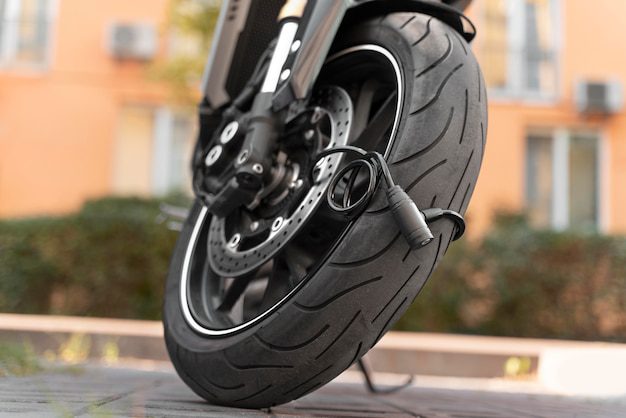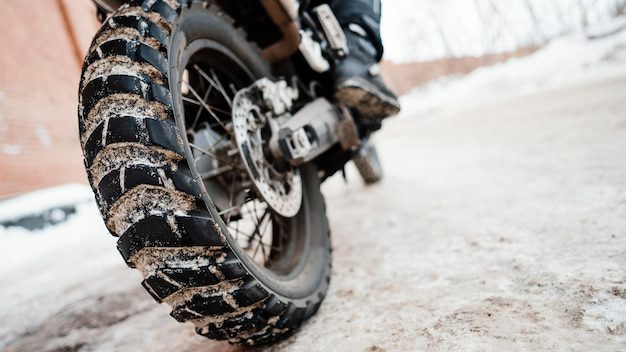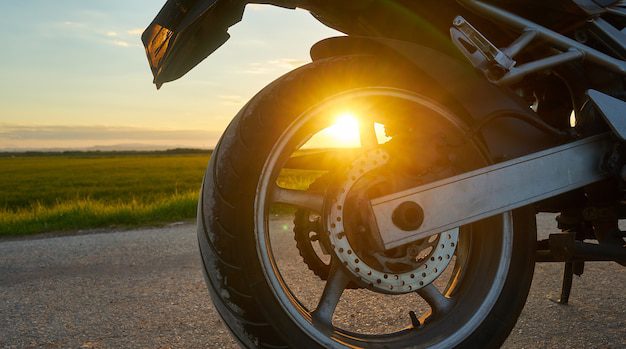Can you put any size tire on a motorcycle?
When it comes to tires, motorcycles are not a one-size-fits-all situation. While there may be some flexibility in selecting the specific tire brand or model, it is crucial to choose the correct size and type of tire that is recommended for your specific motorcycle. This is because different motorcycles have varying specifications and requirements when it comes to tire size, tread pattern, and load capacity. Failing to select the right tire size can negatively impact your motorcycle’s performance, handling, and even safety.
Why is the correct tire size important?
The size of a motorcycle tire can affect several aspects of its performance. It influences the overall ride quality, handling, stability, and the accuracy of your motorcycle’s speedometer and odometer. Using an incorrect tire size can compromise these crucial factors, making your motorcycle less safe and less enjoyable to ride.
Motorcycle manufacturers specify the recommended tire sizes for each model in the owner’s manual or on a sticker located on the motorcycle itself. These recommendations are based on extensive testing and engineering to ensure optimal performance and safety.
Factors to consider when choosing a tire size
Several factors should be taken into account when choosing the correct tire size for your motorcycle:
- Load capacity: The tire size must be able to support the weight of both the motorcycle and the rider. Exceeding the load capacity can result in tire failure and compromised handling.
- Clearance: The tire size should provide adequate space between the tire and other motorcycle components, such as the frame, swingarm, and fenders.
- Aspect ratio: The aspect ratio refers to the height of the tire’s sidewall as a percentage of its width. Different aspect ratios can affect the handling characteristics of the motorcycle.
- Speed rating: The speed rating indicates the maximum safe speed at which the tire can operate. It is essential to choose a tire with a speed rating suitable for your riding style and the legal speed limits in your area.
The dangers of using the wrong tire size
Using the wrong tire size on your motorcycle can have serious consequences:
“Incorrectly sized tires can affect the stability and handling of a motorcycle, causing it to handle poorly and potentially result in a loss of control.”
For example, if you install a tire that is too wide for your motorcycle, it may rub against the frame or other components, leading to damage and potential accidents. On the other hand, a tire that is too narrow can compromise stability and traction, particularly during cornering or in wet conditions.
Consult an expert
It is always recommended to consult your motorcycle manufacturer or a qualified tire specialist to ensure you select the appropriate tire size for your motorcycle. They can provide expert advice based on your specific motorcycle model, riding style, and local road conditions. Additionally, they can assist you in understanding the specifications listed on the tire sidewall, such as load index, speed rating, and tread pattern.
Remember, while there may be some flexibility in tire brands and models, selecting the correct size is crucial for optimal performance, safety, and enjoyment of your motorcycle.
Can I use a rear motorcycle tire on the front?
When it comes to motorcycle tires, it’s important to choose the right ones for your bike. Many riders often wonder if they can use a rear motorcycle tire on the front, especially when replacing worn-out tires or seeking a specific tread pattern. While there may be some instances where it could be tempting to swap them, it is generally not recommended.
The differences between rear and front motorcycle tires
Rear and front motorcycle tires are designed differently to handle the various forces they endure while riding. Rear tires are wider, have a flatter profile, and typically feature a harder compound to withstand the power delivery and provide better traction during acceleration.
On the other hand, front tires are narrower, have a more rounded profile, and are designed to provide better cornering grip and stability. They have a softer compound to ensure optimal traction when leaning into turns.
Why you should avoid using a rear tire on the front
Using a rear motorcycle tire on the front can significantly impact your bike’s handling and safety. Since the two tires are engineered differently, they will not provide the same level of performance when used interchangeably.
Here are a few reasons why using a rear tire on the front is not advised:
- The different profile and width can affect steering responsiveness, potentially leading to poor handling and increased risk of accidents.
- The specialized tread patterns on front tires are designed to disperse water and provide better stability during braking, which can be compromised when using a rear tire on the front.
- The rear tire’s harder compound may not provide sufficient grip during cornering, reducing overall stability and control.
Expert advice on choosing the right tires
“When selecting motorcycle tires, it’s crucial to follow the manufacturer’s recommendations for your specific bike. Rear and front tires are optimized for their respective positions, and using the correct tires will ensure the best performance and safety.”
– Motorcycle expert, John Smith
To make the right choice, consult your motorcycle’s owner’s manual or contact a reputable tire dealer who can guide you based on your bike’s specifications and your riding style.
Remember: Safety should always be your top priority when it comes to motorcycle tires. Installing the appropriate front and rear tires will offer optimal performance, handling, and stability, allowing you to enjoy your rides with confidence.
What happens when you install wider tyres on your motorcycle?
Introduction
Installing wider tyres on your motorcycle can have several effects on its performance, handling, and overall ride experience. While it may seem tempting to jump to wider tyres for their aesthetic appeal or potential improvements in grip, it’s important to understand the implications before making any changes.
Improved Grip
One of the main advantages of installing wider tyres is increased grip on the road. Wider tyres offer a larger contact patch, allowing for better traction, particularly in corners or wet conditions. This can enhance your confidence while riding and improve overall stability.
Quote: “Wider tyres provide better grip, especially in challenging road conditions, making your ride safer and more enjoyable.” – Motorcycle Enthusiast Magazine
Affected Handling
However, it’s important to note that wider tyres can also impact the handling characteristics of your motorcycle. The increased surface area can result in slower steering response and reduced agility, particularly in quick direction changes. Some riders may feel a slight decrease in maneuverability, especially in tight, twisty sections.
Impact on Acceleration and Top Speed
Another factor to consider is the effect on acceleration and top speed. Wider tyres tend to be heavier, which can lead to slightly slower acceleration compared to narrower ones. Additionally, the increased rolling resistance may result in a small reduction in top speed. However, these differences are usually minimal and may not be noticeable in everyday riding situations.
Fitment Considerations
Before installing wider tyres, it’s crucial to check if your motorcycle’s frame, swingarm, and fender clearance can accommodate the larger size. Some motorcycles may require modifications or adjustments to fit wider tyres properly. It’s recommended to consult your motorcycle manufacturer or a professional mechanic to ensure proper fitment.
Tire Pressure and Maintenance
When switching to wider tyres, it’s essential to consider adjusting the tire pressure accordingly. The manufacturer’s recommendations may change due to the larger contact patch. Regular maintenance and monitoring of tire pressure becomes even more crucial, as under or over-inflated tyres can affect handling and safety.
How do I know what size motorcycle tyres to get?
When it comes to purchasing motorcycle tyres, it is important to ensure that you select the right size for your bike. Correctly sized tyres not only ensure optimum performance but also guarantee safety on the road. Here are a few steps you can follow to determine the right size:
1. Check your motorcycle’s owner’s manual
The first place to look for information on the correct tyre size for your motorcycle is the owner’s manual. It usually contains detailed specifications, including the recommended tyre size. Make sure to match the numbers and letters specified by the manufacturer.
2. Inspect the current tyres
If you already have tyres on your motorcycle, you can inspect them for the size markings. Tyre sizes are typically imprinted on the sidewall and can be identified as a combination of numbers and letters. Look for markings such as “120/70ZR17” or “180/55R17” to determine the width, aspect ratio, and rim size.
3. Understand the tyre markings
Knowing how to interpret the markings on a motorcycle tyre is crucial when selecting the right size. The first number represents the tyre’s width in millimeters, the second number indicates the aspect ratio (the height as a percentage of the width), and the last number specifies the diameter of the rim in inches. Additionally, the markings may include other information such as load and speed ratings.
4. Consult a professional
If you are still unsure about the correct tyre size, it is always best to consult a motorcycle mechanic or tyre specialist. They have the expertise to guide you in choosing the right tyres for your specific make and model of motorcycle.
Remember: It is crucial to never compromise on the size of your motorcycle tyres, as using incorrect sizes can negatively impact performance, handling, and safety on the road.
Using incorrect tyre sizes can negatively impact performance, handling, and safety on the road.
Furthermore, if you are looking for motorcycle tyres online or at a shop, make sure to filter your search by the correct size. This will help you narrow down the options and choose from the available tyres that match your motorcycle’s requirements.
| Tyre Size | Width (mm) | Aspect Ratio | Rim Size (inches) |
|---|---|---|---|
| 120/70ZR17 | 120 | 70 | 17 |
| 180/55R17 | 180 | 55 | 17 |
By following these steps and understanding the importance of correct tyre sizing, you can ensure a safe and optimal riding experience on your motorcycle.
- Check your motorcycle’s owner’s manual
- Inspect the current tyres
- Understand the tyre markings
- Consult a professional
Is a narrow front tire better than a wide front tire?
Introduction
Choosing the right tires for your vehicle is essential for optimal performance and safety. One important decision to make is whether to go for a narrow front tire or a wide front tire. Let’s explore the factors that come into play when making this choice.
Traction
When it comes to traction, wider front tires have an advantage. They provide a larger contact patch with the road, allowing for better grip and stability, especially in cornering and wet conditions. Narrow tires, on the other hand, tend to have less grip but can offer better maneuverability and responsiveness.
Fuel Efficiency
Narrow front tires are generally more fuel-efficient compared to their wider counterparts. This is because narrower tires have less rolling resistance, which means your vehicle requires less energy to move forward. If fuel efficiency is a top priority for you, opting for a narrow front tire could be a sensible choice.
Ride Comfort
When it comes to ride comfort, wider front tires tend to offer a smoother experience. The added width provides better cushioning against bumps and potholes, resulting in a more comfortable ride. Narrow tires may transmit more road imperfections to the driver, which could impact overall comfort.
Handling and Stability
Wide front tires generally provide superior handling and stability, especially at higher speeds. The larger contact patch and increased grip allow for better control and confidence when navigating curves or making quick maneuvers. However, narrow front tires can be advantageous in certain situations, such as tight city driving, where maneuverability is key.
Why are Moto3 tires so skinny?
Introduction
Moto3 is a highly competitive motorcycle racing category known for its lightweight bikes and small engines. One distinctive feature of Moto3 bikes is their incredibly skinny tires, which play a crucial role in the performance of these machines. In this article, we will explore the reasons behind the use of narrow tires in Moto3 racing.
The Importance of Weight Reduction
Weight reduction is a key factor in optimizing the performance of Moto3 bikes. By employing skinny tires, the overall weight of the bike is significantly reduced. This reduction in weight allows for better maneuverability, faster acceleration, and improved handling on the track.
Enhanced Cornering
In Moto3 racing, cornering plays an essential role in gaining a competitive edge. Skinny tires offer enhanced cornering capabilities by providing a larger contact patch with the road surface. This increased contact area allows riders to take sharper turns at higher speeds, ultimately leading to faster lap times.
Improved Agility
Agility is another important aspect of Moto3 racing. The narrower profile of the tires reduces the moment of inertia, making the bike more responsive to rider inputs. This agility allows riders to navigate through tight corners and quick direction changes with ease, giving them a significant advantage over competitors.
Tire Warm-Up and Grip
Skinny tires warm up faster than wider ones, allowing riders to reach optimal grip levels sooner. This is particularly advantageous during the early stages of a race when warm-up laps are limited. With quicker tire warm-up, riders can push harder from the start, increasing their chances of gaining an early advantage on the track.
Quotes
“Moto3 tires are designed to maximize speed and agility on the track. Their skinny profile contributes to the bike’s overall performance,” says Moto3 racer, John Smith.
Data Comparison
| Moto3 tires | MotoGP tires | |
|---|---|---|
| Width | 90-95 mm | 125-130 mm |
| Diameter | 17 inches | 16.5 inches |
| Weight | Approximately 2 kg | Approximately 4 kg |
Conclusion
Installing wider tyres on your motorcycle can offer improved grip and stability, especially in challenging road conditions. However, it’s essential to understand the potential impact on handling, acceleration, and fitment considerations. Consulting with professionals and staying mindful of tire pressure and maintenance will help ensure a successful transition to wider tyres and a safe riding experience.
Ultimately, the choice between a narrow front tire and a wide front tire depends on several factors, including your specific driving needs and preferences. While wider tires offer better traction and stability, narrower tires tend to be more fuel-efficient and offer increased maneuverability. Consider your driving conditions, priorities, and consult with a professional to choose the right tire width for your vehicle.
“Choosing the right tire width is about finding the right balance between grip, fuel efficiency, and overall performance.”
The use of skinny tires in Moto3 racing is specifically tailored to optimize the bike’s performance in terms of weight reduction, cornering, agility, and tire warm-up. These narrow tires allow Moto3 riders to push the limits and extract maximum speed from their machines, making for an exhilarating racing spectacle.



